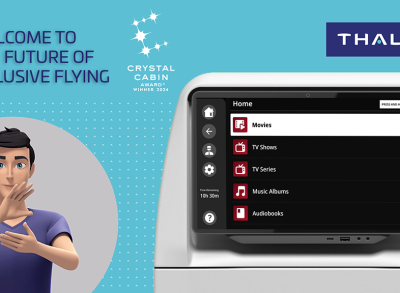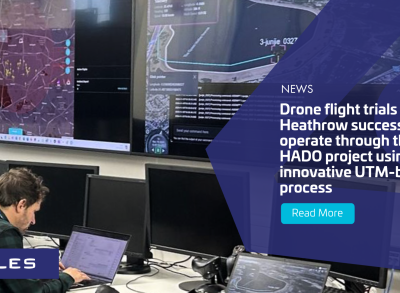Singapore AIR Lab – Optimising ATM for greener aviation

Opening ATM to the future
Initially set-up as a three-year 50-50 collaboration, the Singapore AIR Lab sought to explore the possibility of opening-up Singapore’s Changi’s ATM system to third parties in order to bring new technologies to the ATM world. The objective was to make ATM systems more modern and efficient without compromising their key mission: safety.
This first objective was successfully achieved within the first year. It has since enabled the two partners to trial different Proofs Of Concept (POC) using Changi’s extremely busy environment as a living laboratory to develop the ATM of tomorrow.
ATM for greener aviation
“The global ATM community is looking at the topic of green aviation by exploring how Air Traffic Controllers [ATCOs] can improve air traffic flow, aircraft operations, etc, to achieve more efficient flight execution,” says Hugh Rodrick. With the AIR Lab, Thales and CAAS are contributing to this research by seeking to optimise flights’ departure and arrival operations.
“The first phase of the Proof of Concept (POC) [the 5th POC of the AIR Lab] focuses on flight descent,” Rodrick continues. When flights descend onto an airport there is a wide variety of factors affecting their approach, including air traffic, reserved air space, and potential adverse weather. As such, to ensure a safe descent phase, pilots often have to level-out by applying thrust, which in turn burns more fuel. The objective of this first POC phase is to identify opportunities to facilitate Continuous Descent Operations (CDO), which do not require thrust, for flights landing in Changi.
Playing with history - identifying opportunities
In this first phase, Thales and CAAS are using Changi’s historical data from 2019, when over 30,000 flights per month departed and arrived in Singapore. The objective is to determine a baseline for emissions and understand how many of the descents onto the airport were less than optimal in terms of trajectory versus emissions.
On this basis, the two partners are then seeking to identify which of those operations could have been executed as full or partial CDOs. To do this, AIR Lab teams are using CAASs now open ATM system as a platform where they can insert new data to simulate different trajectories in CDO and see how they could have worked in the busy 2019 context.
“Without this platform, we would not be able to understand the impact of CDOs in a real environment; we would have hypothetical maximum saving but no potential operational saving,” Rodrick highlights.
From theory to practice
Once the potential has been confirmed, AIR Lab teams will work on the next steps to move from simulation to practice.
Thales and CAAS have already started discussions with airlines and pilots to understand what they would need to calculate and implement a safe CDO in a busy environment. “Pilots need to know the distance to run on their track during the descent,” Rodrick explains. This would allow them to use the flight management system to achieve an idle thrust descent (CDO) at the necessary 3° angle. Once this is determined, the two partners need to ensure that ATCs have the information available to them to be able to green-light the proposed CDO.
“Ultimately, the aim is to ensure that the proposed CDO is not interrupted due to traffic, adverse weather or other external elements impacting safety,” Rodrick concludes. The simulations carried out through the AIR Lab will help determine the tools ATCs need in their ATM systems to ensure this does not happen. “A successful CDO means less fuel is burnt, less carbon emissions are generated and, potentially, less fuel is carried by the aircraft for the entire flight.”





